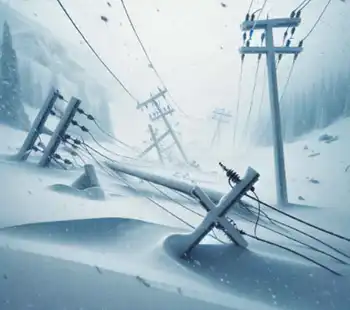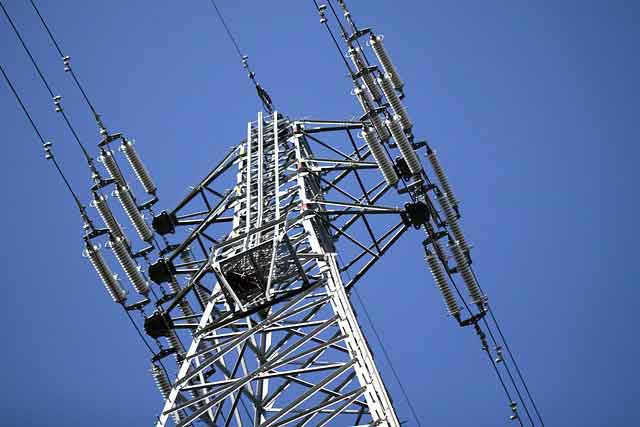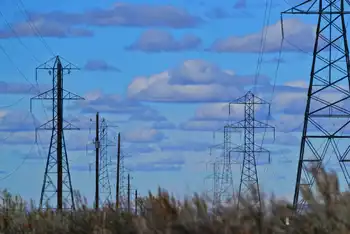Cities can vote to dump PG&E for public utility
The quest for cheaper utility rates in parts of Yolo County began in Davis in the late 1990s, as California began its failed experiment with energy deregulation.
The ensuing crisis, marked by blackouts and soaring utility rates, led PG&E and other utility giants to rack up billions of dollars in debt. Municipally owned utilities emerged relatively unscathed.
"When the energy crisis hit, public power started looking like a really good thing," said Dan Berman, a Davis resident and co-founder of the Coalition for Local Power, the citizens' movement to dump PG&E.
Berman and others started pushing Davis to break away from PG&E, the state's largest utility. The campaign evolved over several years and grew into a ballot initiative that will go before voters in Sacramento and Yolo counties.
At issue is whether the Sacramento Municipal Utility District will be allowed to annex Davis and other parts of Yolo County, including the cities of West Sacramento and Woodland. PG&E would lose 70,000 customers.
The takeover effort could spread throughout PG&E's territory in Northern California if it's successful, Yolo County Supervisor Mariko Yamata said.
"Once people realize the savings they can achieve with a public utility - as opposed to an investor-owned utility that only cares about maximizing their profits - everyone will want to municipalize," Yamata said. "This could spread to the Bay Area and elsewhere, and that scares PG&E."
PG&E has spent more than $10 million campaigning against the annexation, which will appear on the Yolo County ballot as Measures H and I and on the Sacramento County ballot as Measure L. Voters must approve all three measures for the switch to happen.
As a public utility, the Sacramento Municipal Utility District is not allowed to spend money on political campaigning.
Municipal utility officials say the acquisition would cost $110 million and would take five to 10 years to pay off. During that time, Yolo County customers would have to settle for rates only 2 percent less than they pay now.
PG&E argues the takeover will cost more than $500 million and is therefore too risky and too expensive.
"SMUD wants Yolo customers to invest millions of dollars to buy PG&E's property and equipment," said a recent mailer by the Coalition for Reliable and Affordable Electricity, the anti-annexation committee fueled solely by PG&E contributions. "But Yolo ratepayers won't see any benefits from the financial risk we're taking."
Some area residents view PG&E's costly campaign as an attempt to make voters forget the company's turbulent history.
"Public power has been much more dependable," said David Thompson, a Davis resident for the past 26 years. "We're being asked not to trust SMUD by a company that had the largest bankruptcy in California history and that initiated and asked for the most costly utility plan that's ever been promoted."
The pro-annexation campaign promises that Yolo residents will begin seeing huge savings after the PG&E acquisition costs are paid off. The public utility's rates historically have been lower than PG&E's. The gap today - with rates 30 percent lower - is larger than it has been in 20 years.
Those savings could have a real impact on Yolo County, Thompson said. He and his wife, Ann, installed solar panels on their roof in an effort keep their PG&E bills down.
The Davis Food Co-op recently compared its PG&E electricity bills to those of the similarly sized Sacramento Natural Foods Co-op, which gets power from the Sacramento utility. The bills showed the Davis co-op was paying $40,000 more per year, said Thompson, who used to sit on the co-op's board.
"When I think about the communal good (the SMUD annexation) could do, we'd have more money in our community, more representation and higher quality," he said.
The takeover also would help the Sacramento utility spread its costs and become more efficient, said Bill Slaton, a member of the utility's board and chairman of the campaign promoting Measure L in Sacramento County.
"It's healthy for our economy to have these two competing systems and for people to be able to really step back and compare the two," he said.
Related News

Canadian Electricity Grids Increasingly Exposed to Harsh Weather
TORONTO - The recent alerts in Alberta's electricity grid during extreme cold have highlighted a broader North American issue, where power systems are more susceptible to being overwhelmed by severe weather.
Electricity Canada's chief executive emphasized that no part of the grid is safe from the escalating intensity and frequency of weather extremes linked to climate change.
“In recent years, during these extreme weather events, we’ve observed record highs in electricity demand,” he stated.
“It’s a nationwide phenomenon. For instance, last summer in Ontario and last winter in Quebec, we experienced unprecedented demand levels. This pattern of extremes is becoming more pronounced across the…





